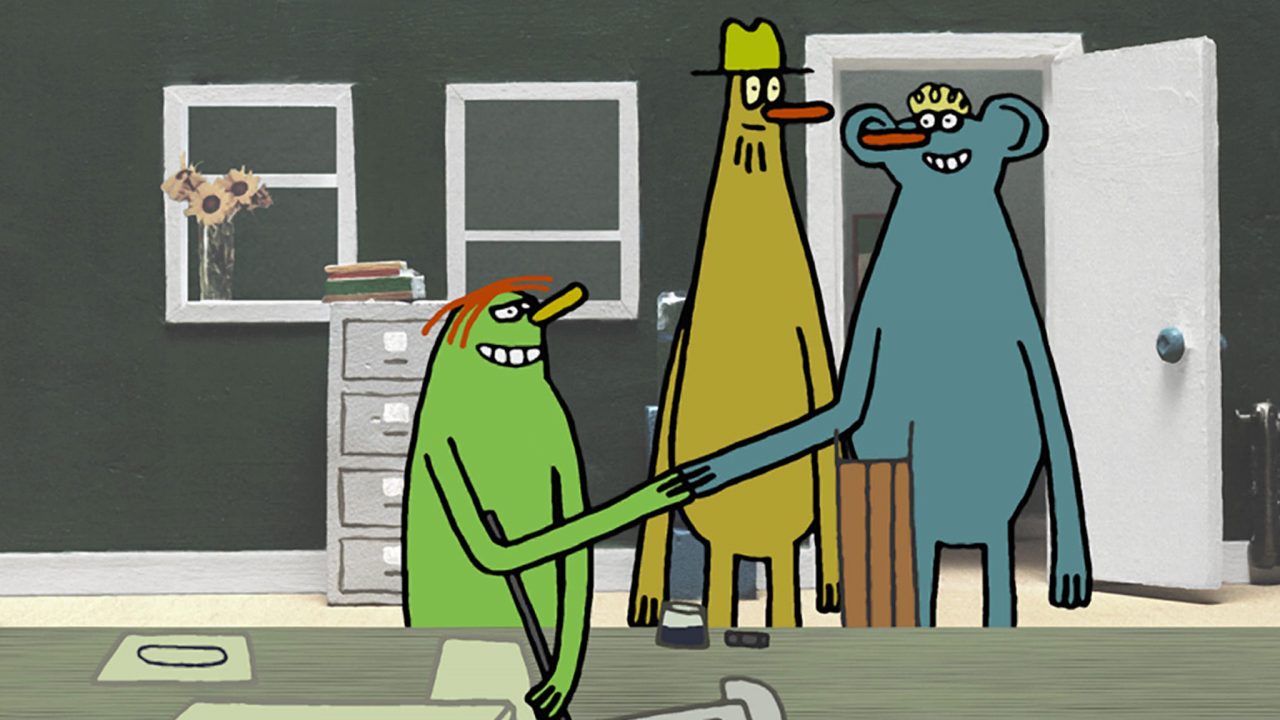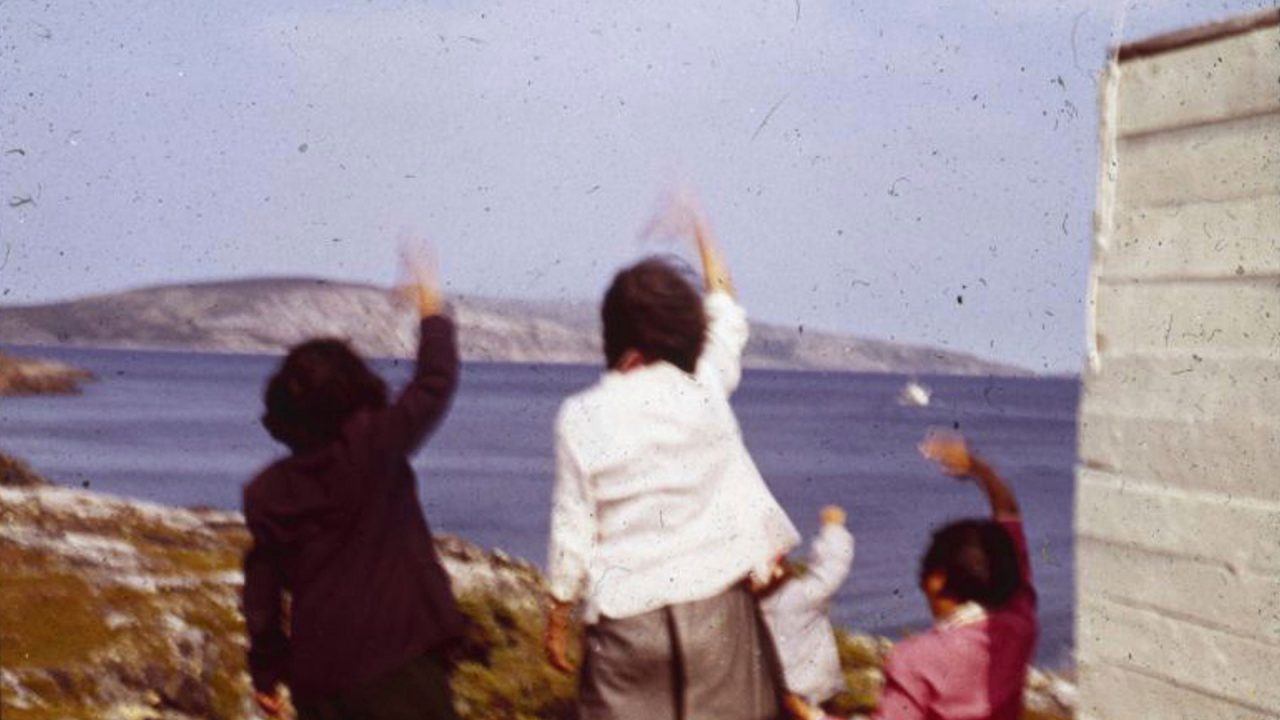
Mini-Lesson for Elbow Room
Mini-Lesson for Elbow Room
Mini-Lesson for Elbow Room: When emotions get the upper hand
School Subjects:
- Problems, conflict resolution
- Bullying and discrimination
- Relationships
- Mental health and stress
Ages: 5-8
Warning: Some aggressive behaviour.
Elbow Room, Diane Obomsawin, provided by the National Film Board of Canada
Keywords/Topics: Conflict resolution, emotions, dialogue, compromise
Overarching Question: How can you express your emotions to others?
Educational Synopsis: In the film, two co-workers are made to share the same workspace. However, their clashing personalities and differing approaches to work soon create tension. How can they defuse the situation?
The lesson explores how the characters express their emotions and the effect that different ways of dealing with conflict will have on them, their work and their colleagues.
Activity 1: A recipe for conflict
Watch the start of the film (00:00 to 02:55).
Discuss what you see in the clip and draw comparisons with similar situations at school.
Invite students to describe the scene, using the following questions:
- What’s going on?
- What does the green character (first employee) do upon entering the room? How do they feel when they start their day?
- Who are the yellow and blue characters? (Boss/new employee)
- What does the blue character do before getting down to work?
- How does the green character feel when the blue character arrives and sets up their workspace? How can you tell?
- How does the blue character feel? How can you tell?
Transpose this scene to a school setting, then encourage students to discuss situations liable to create conflict.
- In the classroom or at school, is it possible to experience conflict with someone who does things differently to you?
- What types of situations can lead to conflict?
As needed, provide examples: different approaches among teammates (working faster/slower than the others, not going through the steps in the right order, forgetting or overlooking instructions, etc.); seeing someone misuse an item that you lent them; playing a game with others who don’t agree on the same rules; etc.
Once the students have answered, ask questions to get them thinking in more depth:
- How do you feel when this kind of situation arises?
- Can you think of any solutions that might help solve this problem?
- Do you know of any other kids who have experienced similar situations? What solutions did they come up with?
Get set to move onto Activity 2: “Let’s see what our two characters do.”
Summary: This activity prompts students to think about conflict and the emotions it can provoke.
After identifying what can lead to a problem situation, students make the connection with their own experience, giving examples based on things they’ve gone through at school.
Activity 2: Conflict-management options
Continue watching the film (from 02:10 to the end), pausing each time the film “rewinds.”
Discuss the four outcomes presented, paying attention to details in the drawing and animation.
If you have more time, you can also look at the expressions associated with the emotions depicted in the film.
Outcome 1: Bursting into tears
(Stop the film at 03:11 to discuss what you’ve just seen.)
- Why is the green character crying?
- Do the other two characters understand these tears? (Help students identify certain details in the drawing, like eyes popping with astonishment).
- How do the character’s feelings affect their work? (Provide hints as needed. Are they getting their work done? What will their co-workers think of them? What will their boss think?)
Expressions associated with the emotions seen in the animation:
- Do you know of any expressions that could describe the way the character is crying? What do their tears make you think of?
You can write down some of these expressions on the board (“cry your eyes out,” “in floods of tears,” etc.), then discuss them.
Outcome 2: Exploding in anger
(Stop the film at 03:55 to discuss what you’ve just seen.)
- What happens in this scene?
- What visual cues suggest the character is very angry and becoming aggressive and violent ? (Provide hints as needed: character turns red, ears and teeth become pointed. Give examples of what this evokes—a wolf, a monster, a ferocious beast, a demon, etc.)
- How do the character’s feelings affect their work? (Prompt students as needed: What happens when they answer the phone? What will their co-workers think? What will their boss think?)
Expressions associated with the emotions seen in the animation:
- Do you know of any expressions that could describe this kind of anger?
You can write down some of these expressions on the board (“see red,” “go ballistic,” “blow a gasket,” etc.), then discuss them.
Outcome 3: Ignoring or aggravating the problem
(Stop the film at 05:30 to discuss what you’ve just seen.)
- What happens in this scene?
- Why are the characters laughing? Do they really find the situation funny?
- How do they feel?
- How do their feelings affect their work? (Prompt students as needed: are they getting their work done [scribbling, doodling]? What do their co-workers think?)
- What does the bomb between them signify?
Expressions associated with the emotions seen in the animation:
- Do you know of any expressions that could describe the discomfort you see in this clip?
You can write down some of these expressions on the board (“forced laughter,” “acting like nothing is wrong,” “talking behind someone’s back”), then discuss them.
Outcome 4: Dialogue
(Watch the film to the end.)
- What happens?
- How do the characters feel after their discussion?
- Are all of their problems instantly solved? (Point out that it’s often more effective to address just one problem at a time.)
- How do their co-workers react? (Draw parallels with the classroom: Whenever there’s a dispute in class, how do students who are not directly involved feel? Why?)
- What has changed by the end of the scene? Have the two employees changed their personalities? Their approaches to work? (Point out that the conflict in this case has been resolved by a change in setting, not a change in character. You don’t always need to change yourself or get the other person to change in order to get along; there are many solutions.)
Summary: This activity allows students to explore four ways of dealing with conflict. Based on questions from the teacher, students judge what works (or doesn’t) as well as the impact of each approach.
The type of strategy chosen to deal with conflict can affect not just the final outcome, but also the individual’s feelings, their ability to resolve future conflicts and the way others see them.
Activity 3: Putting words to images
Watch the conflict-resolution scene again (from 05:50 to the end).
Group writing and sharing
Have the class form teams (two to three students per team), then write a dialogue for the two characters.
Go over how to write dialogue by providing examples on the board, with particular attention to punctuation (dashes, quotation marks, colons after character names [like in a stage play or screenplay], etc.).
Provide reference questions to help the students:
- How does the green character explain the situation to their co-worker?
- How does the blue character react to these comments?
The dialogue should have two sections: Problem 1 (bumping elbows during work) and Problem 2 (the noise made by the blue character).
As needed, write down a dialogue template on the board, e.g.:
Green:
Blue:
Change places
Blue:
Green:
Blue:
Green:
The two characters hug.
Invite the teams to share their dialogue with the class (two students from the team can read the lines, like in a stage play).
Summary: In the final scene, the two co-workers find a solution to the problem of sharing the workspace. Since the animation is without words, it is up to the students to invent the dialogue.
Taking action: Choosing how to react
This writing exercise can take the form of an essay or a comic strip.
Have students think of a conflict they have experienced and, inspired by the film, “rewind” to imagine a different outcome.
Ask students to describe the conflict:
- What was the context (in class, during recess, during an activity, at home, etc.)?
- What was the problem? Why did conflict arise?
- What did you feel during the conflict?
- How might words have resolved the conflict (or not)? What did you, the others involved and/or any third parties say?
Invite students to imagine a different outcome.
- Use a transitional phrase like “But things may have turned out differently if…”, “Cut! Let’s go back and redo the scene” or “This is what might have happened if…”
- Explain how the conflict could have been resolved by writing the dialogue between two or more people.
Invite students to share their new outcome with the class. If anyone has described a conflict that is recent or ongoing, you can suggest that they put the imagined solution into practice.
This lesson can provide insights into how students are liable to cope with conflict. From here, the teacher can suggest other activities to help them recognize problems, identify how such situations make them feel and find solutions.
Pour lire cet article en français, cliquez ici.
Discover more Mini-Lessons | Watch educational films on NFB Education | Watch educational playlists on NFB Education | Follow NFB Education on Facebook | Follow NFB Education on Pinterest | Subscribe to the NFB Education Newsletter



